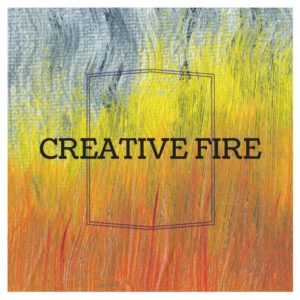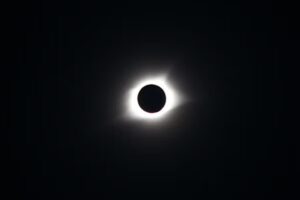
“Creativity – like human life itself – begins in darkness.” –Julia Cameron
* * *
April 8, 2024 The date of the great eclipse when a wide swath of the United States will be darkened as the sun and moon perform a heavenly pas de deux.
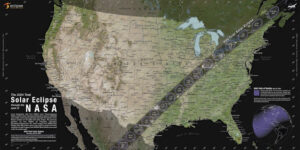
Memphis will see only a 98% covering, so my husband and I plan to travel with some friends to Arkansas to experience the full beauty of the show.
This will not be the first time we’ve observed a total eclipse. Way back in 1970, there was a total eclipse in my hometown of Savannah, Ga. I remember the experience well, but not for the reason you may think.
Unfortunately, the day was cloudy, but as the moon moved between the Earth and the sun, the clouds would occasionally break and give us a series of snapshots of the phenomenon. When the moment of totality arrived, the clouds once again opened, and we saw the black disk, then the bright flash of light as the moon moved on to continue its course. But that still wasn’t what astonished me.
It was the darkness.
Standing on the front lawn of my parents’ home, I looked down the street and saw a wall of black shadow racing toward us. It wasn’t like a cloud that covered the sun. It was a dark, menacing presence, rushing forward to devour the light in its path until it overtook us, and suddenly all was night.
Even though we understood what was happening, I had a sense of primordial awe that I have never forgotten.
* * *
Authors of mystery, suspense, and thrillers are well acquainted with darkness. It’s a symbol of the unknown, and that usually means fear, anxiety, loneliness, or panic will grip the main character and get the reader’s heart pumping a little harder.
“All great and beautiful work has come of first gazing without shrinking into the darkness.” –John Ruskin

A character walks out into a black night and senses a presence that he can’t see, or comes face-to-face with his own demons in the dark night of the soul when all appears lost. That heart-stopping look into the abyss rivets the attention and keeps the reader turning pages.
Here are a few examples.
* * *
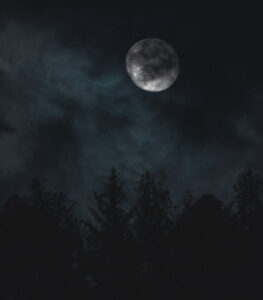
We probably all studied Edgar Allen Poe’s The Raven in high school. Fear and doubt consume the poet as he contemplates his own loneliness late at night. Then he hears a sound and thinks it’s a visitor knocking. He opens the door and sees … nothing.
“Deep into that darkness peering, long I stood there, wondering, fearing, doubting, dreaming dreams no mortal ever dared to dream before.”
The murky setting on the moors gave Arthur Conan Doyle’s The Hound of the Baskervilles a sense of mystery and foreboding.
“As if in answer to his words there rose suddenly out of the vast gloom of the moor that strange cry which I had already heard upon the borders of the great Grimpen Mire. It came with the wind through the silence of the night, a long, deep mutter, then a rising howl, and then the sad moan in which it died away. Again and again it sounded, the whole air throbbing with it, strident, wild, and menacing. The baronet caught my sleeve and his face glimmered white through the darkness. ‘My God, what’s that, Watson?’”
A sense of impending doom in Dean Koontz’s Midnight builds as a woman goes for a run on the beach in the middle of the night.
“Suddenly, as she was passing a pair of forty-foot, twisted cypresses that had grown in the middle of the beach, halfway between the hills and the waterline, Janice was sure she was not alone in the night and fog. She saw no movement, and she was unaware of any sound other than her own footsteps, raspy breathing, and thudding heartbeat; only instinct told her that she had company.”
Last week Kris introduced us to the Edgar finalists in her post. The first sentence of All the Sinners Bleed by S.A. Cosby hints of a violent past returning to haunt a small town.
“Charon County was founded in bloodshed and darkness.”
* * *
So, TKZers, there you have it. The Art of Darkness. How do you represent darkness in your books? Do you have any examples from the works of others that illustrate either physical or metaphorical darkness? Have you ever seen a total eclipse of the sun?
* * *
I don’t know how much access I’ll have to TKZ during the day, but I’ll respond to comments whenever I can.
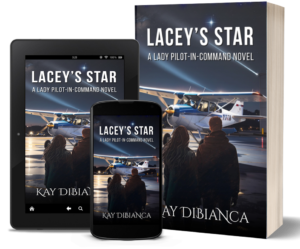 “Character, like a photograph, develops in darkness.” –Yousuf Karsh
“Character, like a photograph, develops in darkness.” –Yousuf Karsh
Private pilot Cassie Deakin has a lot of opportunity to develop character while she hunts a killer.
Buy on Amazon, Barnes & Noble, Kobo, Google Play, or Apple Books.

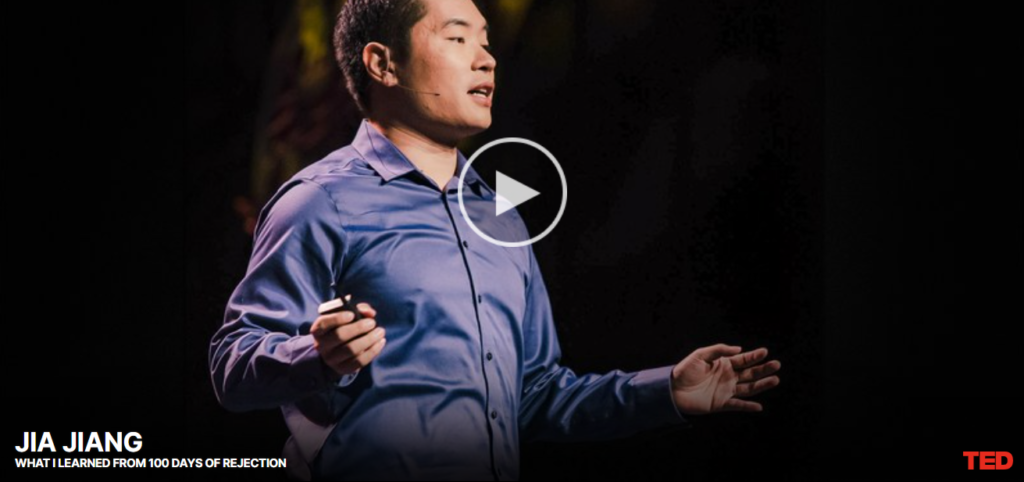
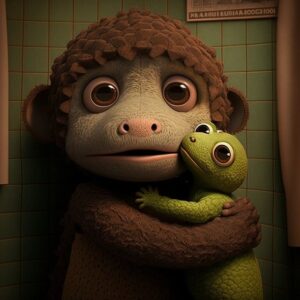 Last night, my husband and I went to a pumpkin festival with another couple. The town blocks off downtown’s main drag, and skeletons, witches, monsters, live music, and laser shows filled the streets.
Last night, my husband and I went to a pumpkin festival with another couple. The town blocks off downtown’s main drag, and skeletons, witches, monsters, live music, and laser shows filled the streets.
